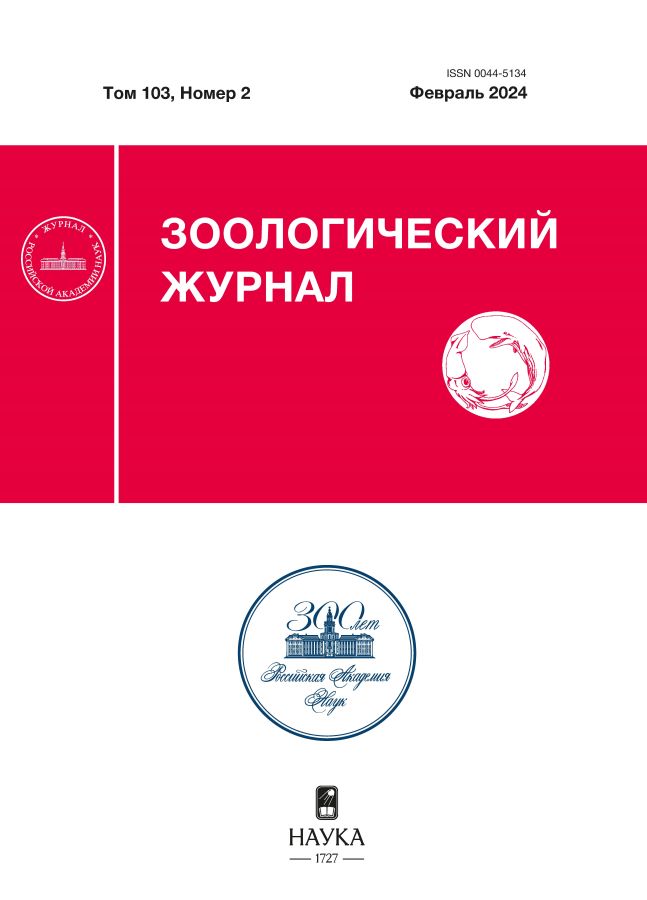Three new species of oribatid mites of the superfamily oripodoidea (acari, oribatida) from Vietnam
- 作者: Ermilov S.G.1, Salavatulin V.M.1,2, Kontschán J.3,4
-
隶属关系:
- Tyumen State University
- Joint Russian-Vietnamese Tropical Research and Technological Center
- Plant Protection Institute, Hungarian Academy of Sciences
- Széchenyi István University
- 期: 卷 103, 编号 2 (2024)
- 页面: 3-13
- 栏目: ARTICLES
- URL: https://permmedjournal.ru/0044-5134/article/view/654313
- DOI: https://doi.org/10.31857/S0044513424020011
- EDN: https://elibrary.ru/VXUQQE
- ID: 654313
如何引用文章
详细
Three new species of oribatid mites (Oribatida) of the superfamily Oripodoidea – Phauloppia differens sp. n. (Oribatulidae), Oripoda operta sp. n. (Oripodidae) and Pirnodus concavus sp. n. (Oripodidae) – are described, based on adults collected from the bark and tree branches of Dipterocarpus alatus and Haldina cordifolia in southern Vietnam.
全文:
作者简介
S. Ermilov
Tyumen State University
编辑信件的主要联系方式.
Email: ermilovacari@yandex.ru
俄罗斯联邦, Tyumen, 625003
V. Salavatulin
Tyumen State University; Joint Russian-Vietnamese Tropical Research and Technological Center
Email: v.salavatulin@gmail.com
俄罗斯联邦, Tyumen, 625003; Southern Branch, Ho Chi Minh City, Vietnam
J. Kontschán
Plant Protection Institute, Hungarian Academy of Sciences; Széchenyi István University
Email: kontschan.jeno@atk.hu
匈牙利, Budapest, H-1025 Hungary; Mosonmagyaróvár, 9026
参考
- Aoki J., Yamamoto Y., 2007. New arboreal oribatids (Arachnida, Acari, Oribatida, Oripodidae) collected from broadleaf evergreen trees in Central Japan // Species Diversity. V. 12. P. 271–277.
- Corpuz-Raros L., Ermilov S.G., 2020. Catalogue of oribatid mites (Acari: Oribatida) from Continental Southeast Asia // Zootaxa. V. 4893. P. 1–216.
- Ermilov S.G., Salavatulin V.M., 2023. New arboreal mite species of Oribatulidae and Oripodidae (Acari, Oribatida, Oripodoidea) from Vietnam // International Journal of Acarology. V. 49. P. 283–291.
- Grandjean F., 1950. Observations sur les Oribates (21e série) // Bulletin du Museum nationale d’Histoire Naturelle (2). V. 22. P. 344–351.
- Grandjean F., 1956. Sur deux espéces nouvelles d’Oribates (Acariens) apparentées à Oripoda elongata Banks 1904 // Archives de Zoologie experimentale et generale. V. 93. P. 185–218.
- Norton R.A., 1977. A review of F. Grandjean’s system of leg chaetotaxy in the Oribatei (Acari) and its application to the family Damaeidae // In: Dindal D.L., editor. Biology of oribatid mites. Syracuse: SUNY College of Environmental Science and Forestry. P. 33–61.
- Norton R.A., Behan-Pelletier V.M., 2009. Oribatida // A Manual of Acarology (TX). Lubbock: Texas Tech University Press. P. 430–564.
- Pérez-Íñigo C., 1993. Acari. Oribatei, Poronota // In: Ramos M.A. et al., editors. Fauna Iberica, Volume 3. Madrid: Museo Nacional de Ciencias Naturales Press. P. 1–320.
- Salavatulin V., 2019. Microhabitat distribution of arboreal oribatid mites (Oribatida), associated with the Siberian pine (Pinus sibirica) of Western Siberia // Experimental and Applied Acarology. V. 78. P. 469–483.
- Salavatulin V.M., Ermilov S.G., Kudrin A.A., Nguyen T.D., 2022. Initial data on arboreal oribatid mites (Acari, Oribatida) from Vietnam // Acarina. V. 30. P. 103–108.
- Subías L.S., 2022. Listado sistemático, sinonímico y biogeográfico de los ácaros oribátidos (Acariformes: Oribatida) del mundo (excepto fósiles) // Monografías Electrónicas S.E.A. V. 12. P. 1–538.
- Travé J., 1959. Dimorphisme sexuel chez Pirnodus detectidens Grandjean (Acariens, Oribates). Notes écologiques et éthologiques // Vie et Milieu. V. 9. P. 454–468.
补充文件















